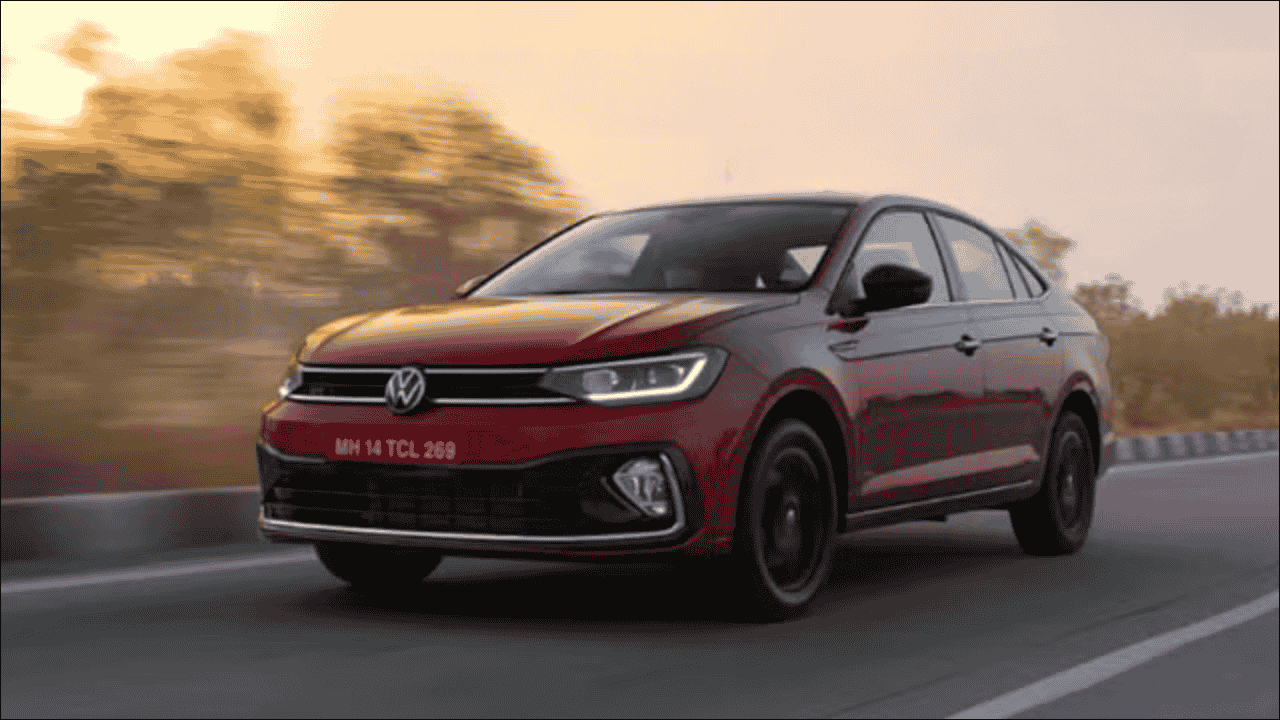
In the rich tapestry of India’s motorcycling heritage, few machines evoke as much emotion and nostalgia as the legendary Yamaha RX100. This iconic two-stroke motorcycle, which dominated Indian roads from 1985 until its discontinuation, represents far more than just a mode of transportation—it embodies an entire generation’s coming-of-age story. Today, well-preserved examples of this beloved machine command prices around ₹85,639, a remarkable testament to its enduring appeal and cultural significance that transcends mere monetary value.
For countless Indian families, the RX100 wasn’t just Nana’s motorcycle; it was the soundtrack of an era, the companion of weekend adventures, and often the first taste of real performance that young riders experienced. The distinctive ring-a-ding exhaust note became as familiar as a grandfather’s voice, echoing through narrow lanes and bustling streets across the country. This emotional connection has transformed what was once an everyday commuter into one of India’s most cherished automotive collectibles.
The motorcycle’s journey from practical transportation to coveted collector’s item reflects a broader story about India’s automotive evolution, changing social dynamics, and the powerful role that mechanical objects can play in shaping cultural memories. Understanding why the RX100 commands such respect and value today requires examining both its technical brilliance and its profound impact on Indian society.
Table of Contents
The Golden Era: RX100’s Cultural Revolution
The mid-1980s introduction of the Yamaha RX100 marked a pivotal moment in India’s automotive landscape, coinciding perfectly with the country’s economic liberalization and the emergence of a new middle class eager for exciting yet accessible personal transportation options.
| Historical Context | Market Condition | RX100’s Impact | Long-term Influence |
|---|---|---|---|
| Pre-1985 Motorcycle Scene | Dominated by utilitarian commuters and expensive Bullets | Introduced affordable performance concept | Created new market segment |
| Economic Liberalization | Growing middle class with disposable income | Made performance accessible to masses | Democratized motorcycling enthusiasm |
| Youth Culture Shift | Increasing desire for self-expression | Became symbol of freedom and rebellion | Influenced generational attitudes |
| Technology Adoption | Limited performance options available | Brought advanced two-stroke technology | Set new engineering standards |
Before the RX100’s arrival, Indian motorcycle enthusiasts had stark choices: utilitarian machines that prioritized fuel efficiency over excitement, or expensive Royal Enfield Bullets that served a niche market segment. The RX100 carved out an entirely new category, offering thrilling performance previously unavailable at accessible price points.
This timing proved crucial to the motorcycle’s success. India’s youth were increasingly seeking avenues for self-expression, and the RX100 became a powerful cultural symbol representing freedom, rebellion, and aspiration. In countless towns and cities, owning an RX100 established definitive “cool” status among young riders.
Engineering Excellence: The Technical Foundation of Legend
The heart of the RX100’s legend lay in its remarkable engineering, which delivered performance that seemed almost magical to riders accustomed to sluggish commuter motorcycles.
| Technical Specification | RX100 Details | Performance Impact | Engineering Significance |
|---|---|---|---|
| Engine Configuration | 98cc, Two-stroke, Air-cooled, Single-cylinder | Exceptional power-to-weight ratio | Advanced for era and displacement |
| Power Output | 11 bhp @ 7,500 rpm | Revolutionary for 100cc class | Set new performance benchmarks |
| Torque Generation | 10.39 Nm @ 6,500 rpm | Immediate throttle response | Characteristic two-stroke delivery |
| Transmission | 4-speed constant mesh | Optimal gear ratios | Perfect power utilization |
| Weight | 103 kg dry weight | Outstanding handling agility | Contributed to performance feel |
| Wheelbase | 1,230 mm | Stable yet nimble handling | Balanced geometry |
| Acceleration | 0-60 km/h in ~7 seconds | Impressive for era | Competitive even today |
The two-stroke engine architecture provided characteristics that became the motorcycle’s defining features: immediate throttle response, a distinctive power band that kicked in around 3,000 rpm, and an unmistakable acoustic signature that enthusiasts could identify from blocks away.
Yamaha’s torque induction system optimized power delivery across the rev range, while the perfectly matched 4-speed gearbox allowed riders to extract maximum performance with minimal effort. The conventional suspension setup—telescopic forks front and swing arm rear—provided confident handling that inspired rider confidence without overwhelming novice motorcyclists.
The Unforgettable Riding Experience and Sensory Connection
The RX100 experience transcended mere transportation, creating lasting sensory memories that continue to resonate with riders decades later. Every aspect of operating the motorcycle contributed to its unique character and emotional appeal.
| Experience Element | Characteristic | Emotional Impact | Memory Association |
|---|---|---|---|
| Starting Ritual | Kick-start procedure with blue smoke | Anticipation and mechanical connection | Morning routine, preparation |
| Exhaust Note | High-pitched crescendo with “braaap” sound | Distinctive audio signature | Instant recognition, pride |
| Acceleration | Momentary hesitation then surge | Adrenaline rush, excitement | Performance validation |
| Handling | Nimble, responsive, confidence-inspiring | Sense of control, mastery | Skill development |
| Modification Culture | Expansion chambers, port work | Personal expression, performance gain | Individual identity |
| Community | Shared enthusiasm, technical knowledge | Belonging, friendship | Social connections |
The ritual of bringing the RX100 to life began with the distinctive kick-starting procedure, often requiring technique and understanding of the machine’s temperament. Successful first-kick starts on cold mornings became sources of pride, while multiple attempts led to colorful expressions and mechanical sympathy that deepened the rider-machine relationship.
Once running, the characteristic two-stroke hesitation gave way to exhilarating acceleration that could surprise much larger motorcycles. The willingness to rev, combined with the lightweight chassis, created a riding experience that felt far more potent than displacement numbers suggested.
Collector Market Dynamics and Value Appreciation
The transformation of the RX100 from everyday transportation to valuable collector’s item reflects broader trends in automotive collecting while highlighting the motorcycle’s unique cultural significance.
| Collector Category | Motivation | Typical Investment | Market Behavior |
|---|---|---|---|
| Nostalgia Buyers | Emotional connection to youth | ₹50,000-₹85,639 | Seeking specific memories |
| Investment Collectors | Appreciating asset value | ₹85,639+ for pristine examples | Focus on condition and rarity |
| Restoration Enthusiasts | Project satisfaction | ₹30,000-₹60,000 for restoration bases | Value creation through work |
| Younger Enthusiasts | Pure riding experience | Variable budget approach | Seeking authentic character |
Current market values around ₹85,639 for well-preserved examples represent remarkable appreciation that speaks to genuine demand rather than speculative bubbles. The pricing reflects several factors: genuine scarcity of good examples, strong emotional attachment from potential buyers, and recognition of the motorcycle’s historical significance.
The rising values have spawned a dedicated restoration industry focused on returning neglected examples to their former glory. Finding original parts has become increasingly challenging, creating thriving markets for new old stock components and high-quality reproductions. Early models with distinctive square headlamps and original paint schemes command premium prices among serious collectors.
Modification Culture and Technical Heritage
The RX100 fostered a robust modification culture that preserved specialized knowledge and skills while enabling personal expression through mechanical creativity.
| Modification Type | Technical Purpose | Performance Impact | Cultural Significance |
|---|---|---|---|
| Expansion Chambers | Improved exhaust tuning | 15-20% power increase | Status symbol, sound enhancement |
| Port Modifications | Enhanced breathing | Better throttle response | Technical skill demonstration |
| Carburetor Tuning | Optimized fuel delivery | Improved performance | Understanding engine theory |
| Aesthetic Changes | Personal expression | Visual uniqueness | Individual identity |
| Performance Air Filters | Increased airflow | Marginal power gains | Attention to detail |
These modifications often represented weekend projects that taught younger family members about engine theory, mechanical principles, and the satisfaction of improving something with their own hands. The knowledge gained from working on RX100s frequently sparked lifelong interests in mechanical engineering and automotive technology.
The modification culture also preserved technical knowledge that might otherwise have been lost as the industry moved toward more complex, less user-serviceable machines. This grassroots technical education created a generation of mechanically literate enthusiasts who could diagnose, repair, and improve their motorcycles.
Generational Impact and Family Connections
For many Indian families, the RX100 represents a tangible bridge between generations, carrying stories and memories that extend far beyond its mechanical attributes.
| Generational Role | Family Impact | Memory Type | Legacy Value |
|---|---|---|---|
| Grandfather’s Pride | First serious motorcycle purchase | Achievement, success | Financial milestone |
| Father’s Learning | Mechanical education, riding skills | Coming of age | Technical knowledge transfer |
| Son’s Introduction | First performance experience | Excitement, capability | Enthusiasm inheritance |
| Modern Recognition | Cultural significance appreciation | Historical understanding | Heritage preservation |
The motorcycle that once carried grandfathers to work, weekend outings, and family celebrations became a repository of memories that could be shared across generations. Stories of long rides, mechanical adventures, and the pride of ownership create emotional connections that transcend the machine’s practical utility.
Many current collectors include not only original owners but also younger enthusiasts—often born after production ceased—who seek these machines for the pure, analog motorcycling experience they offer. This cross-generational appeal demonstrates that the RX100’s charm transcends nostalgia to represent something fundamental about the relationship between rider and machine.
Modern Market Realities and Investment Perspective
Today’s RX100 market reflects mature collector dynamics with established value hierarchies and knowledgeable participants who understand the nuances that determine worth.
| Condition Category | Price Range | Market Availability | Investment Potential |
|---|---|---|---|
| Concours/Museum Quality | ₹80,000-₹1,00,000+ | Extremely rare | Strongest appreciation |
| Excellent Original | ₹60,000-₹85,639 | Limited availability | Solid investment |
| Good Running Condition | ₹35,000-₹55,000 | Moderate supply | Stable value |
| Restoration Projects | ₹15,000-₹35,000 | Regular availability | Skill-dependent value |
The market shows remarkable stability, with values supported by genuine demand rather than speculative activity. Seasonal variations occur, with higher activity during festival periods and motorcycle season, but underlying demand remains consistent.
International interest has emerged, with collectors in Southeast Asia and other markets recognizing the RX100’s significance, potentially supporting long-term value appreciation.
Conclusion: More Than Metal and Memories
The enduring appeal of the Yamaha RX100 at today’s collector prices around ₹85,639 reflects something deeper than mere nostalgia for a bygone era. It represents the emotional connection between generations, the pride of ownership that comes from understanding and maintaining a mechanical device, and the simple joy of experiencing pure, unfiltered motorcycling.
In an age where vehicles increasingly prioritize efficiency and technology over character and engagement, the continued admiration for the RX100 serves as a powerful reminder that the emotional bond between rider and machine matters profoundly. The distinctive aroma of two-stroke oil, the mechanical symphony of its engine, and the unfiltered feedback through handlebars and seat created memories that fuel its legend decades later.
For those who grew up with the sound of Nana’s RX100 warming up in the courtyard, current collector prices represent more than market appreciation—they validate the significance of machines that shaped childhoods, taught life lessons, and connected families across generations. The RX100’s legacy lives on not just in restored examples but in the values it represented: simplicity, reliability, and the pure joy of motorcycling.
The remarkable journey from ₹18,000 new price to ₹85,639 collector value tells a story about changing India, evolving transportation needs, and the timeless appeal of machines that captured hearts as effectively as they conquered roads.
Frequently Asked Questions
Q: Why do Yamaha RX100 motorcycles cost ₹85,639 today when they were much cheaper when new? A: The high current prices reflect the RX100’s transformation from everyday transportation to sought-after collector’s item. Production ended decades ago, making well-preserved examples increasingly rare. The motorcycle’s legendary status, combined with strong nostalgia from multiple generations and genuine appreciation for its unique two-stroke character, has driven collector demand far beyond original pricing.
Q: What makes the RX100 so special compared to modern motorcycles in similar displacement categories? A: The RX100’s two-stroke engine provided immediate throttle response, distinctive exhaust note, and superior power-to-weight ratio impossible to replicate with modern four-stroke technology. Its simple mechanical design, weighing just 103kg, offered pure riding engagement without electronic aids. The cultural significance and emotional connection it created with riders cannot be duplicated by contemporary motorcycles focused on efficiency over character.
Q: Are RX100 motorcycles still practical for daily use, or are they purely collector items now? A: While RX100s can still be used for daily transportation with proper maintenance, most well-preserved examples are now treated primarily as collector items due to their appreciating value and parts scarcity. The two-stroke engine requires specific knowledge and care, making them less practical than modern motorcycles for regular commuting, though many enthusiasts continue enjoying weekend rides.
Q: What should buyers look for when purchasing a Yamaha RX100 as a collector investment? A: Focus on matching engine and frame numbers, original paint and components, and overall mechanical condition. Early models with square headlamps are most valuable. Check for engine rebuild quality, electrical system condition, and documentation of any restoration work. Consider the motorcycle’s provenance and any family history attached to it, as these stories add emotional value that supports long-term appreciation.




